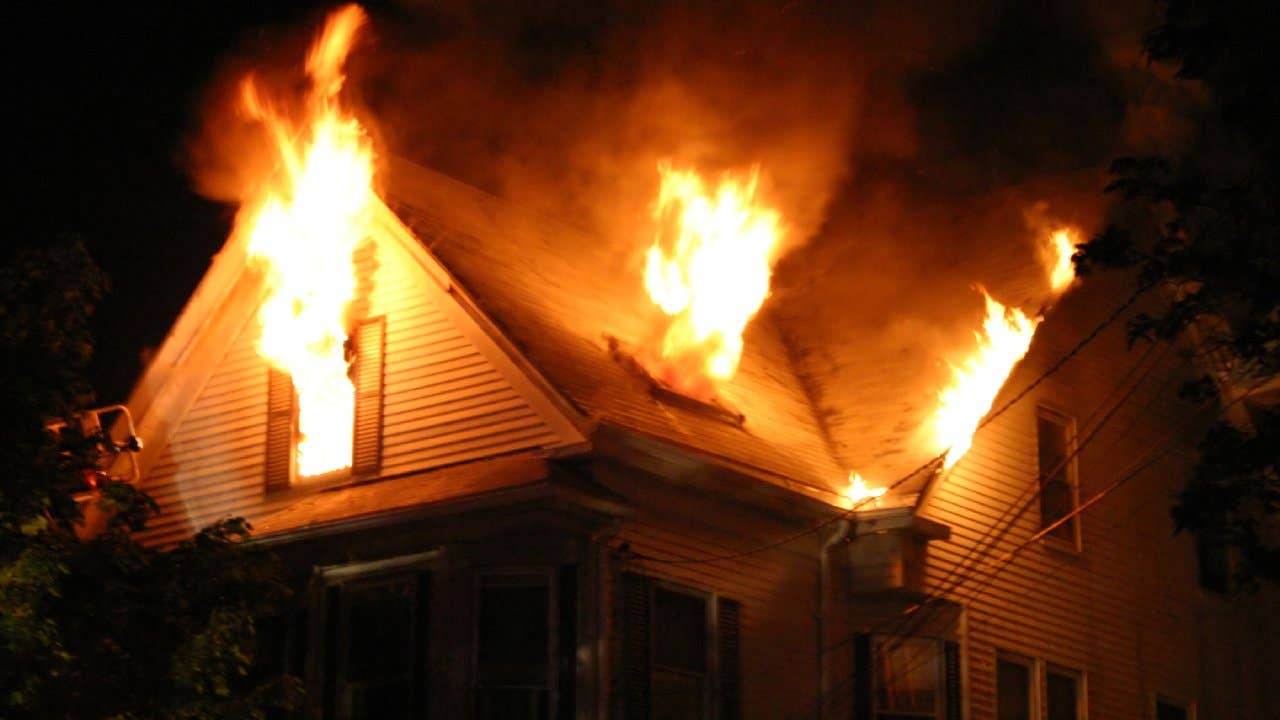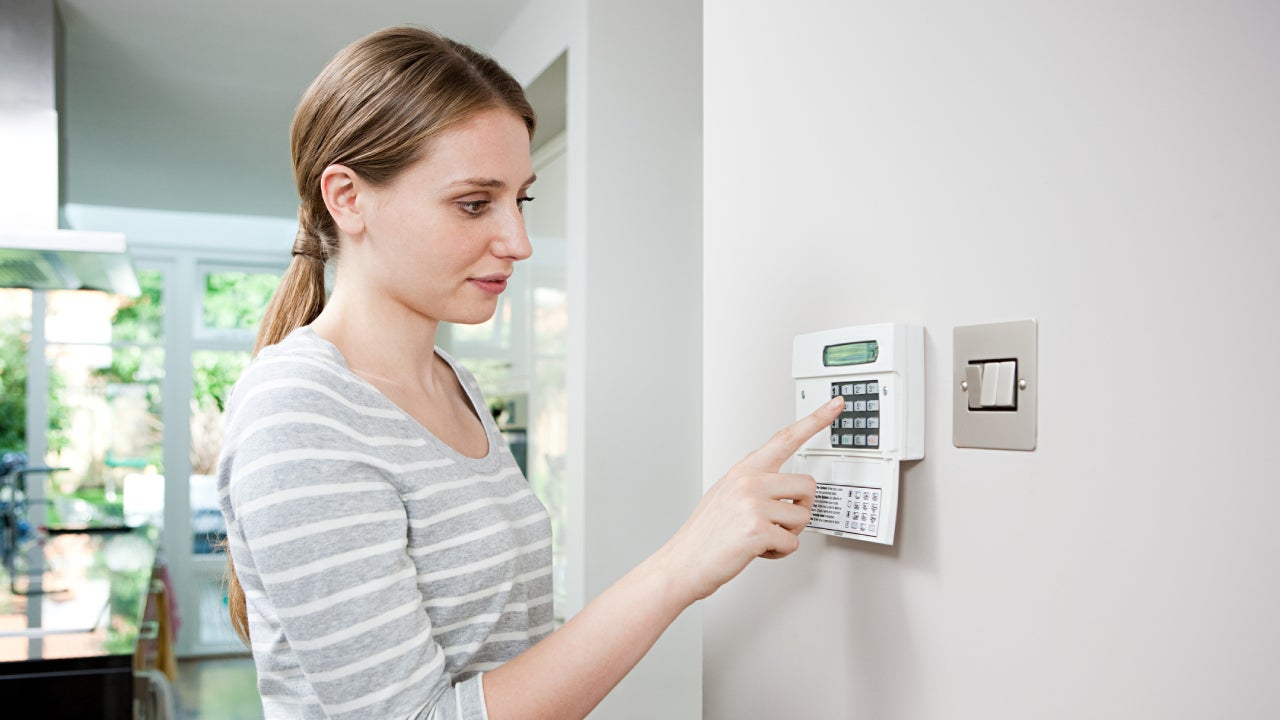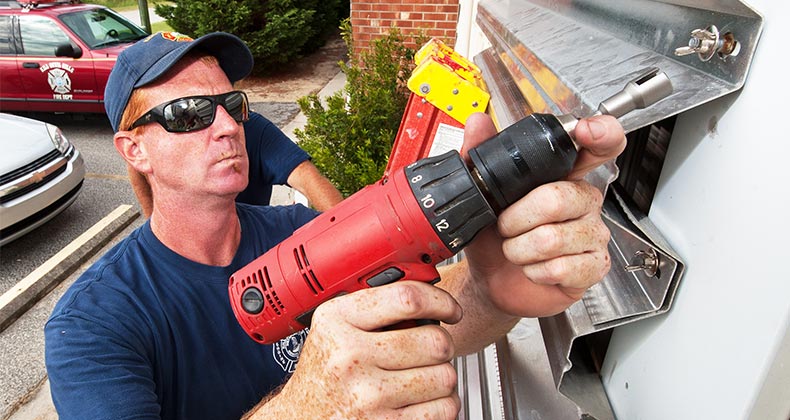Protecting your home from fires: safety tips for each room in the house

The number of house fires occurring in the United States each year is staggering. You’re most likely to be hurt or killed by a fire at home than a fire anywhere else.
According to the National Fire Protection Association (NFPA), in the five-year period ending in 2021 (the latest available), an estimated 361,000 home fires each year resulted in 2,800 civilian deaths, 11,500 injuries and nearly $9 billion in property damage. While only one-quarter of fires overall occur in residential properties, they account for three-quarters of civilian deaths and injuries.
Every 93 seconds
Source: National Fire Protection Association
While it’s not possible to completely fireproof your home, there are fire preparedness steps you can take. Some efforts may even get you a break on your homeowners insurance premiums.
Where do house fires start?
When it comes to fires, not all rooms in the house are created equal. Here are the most common areas where they occur.
Kitchen fires
More house fires originate in the kitchen than in any other room: About half of all residential fires start there. Between 2017 and 2021, cooking was the leading cause of reported home fires and home fire injuries, and the second leading cause of home fire deaths, according to the NFPA. Many of these fires were caused by people leaving cooking food unattended, having combustibles too close to the heat source or forgetting to turn off cooking equipment, such as stoves or ovens, when done.
There are several simple steps to take to avoid kitchen fires:
- Stay in the kitchen while cooking. If you must leave the house for any reason, turn the stove, oven or other appliance off until you return.
- For food that takes a long time to prepare, check back frequently. This will help prevent potential causes of fires, for example, if the liquid has boiled away and food is cooking dry.
- Set timers to keep track of cooking times and as a reminder of when food should be ready.
- Keep items that can easily catch fire — oven mitts, paper towels, cloth towels, food packaging, wooden utensils — away from the cooking source.
- Keep young children away from cooking sources. Not only will this help prevent burns, it could also keep them from putting flammable items near stoves, ovens and other devices.
- Be especially careful with oils and grease. These combustibles can’t be extinguished with water. Either smother the flames or use a kitchen-rated fire extinguisher.
Bedroom fires
The second most-common area for house fires are bedrooms. These fires may be caused by people falling asleep while smoking or could be electrical in nature, caused by faulty wiring, malfunctioning or worn-out electric blankets or the use of space heaters while people are sleeping.
Fire safety tips for the bedroom include:
- Don’t smoke in bed. If you fall asleep and your cigarette’s embers fall on the bed sheets, blankets or carpet, it could start a fire.
- Blow out candles before going to bed.
- Place laptops, cell phones and other charging devices on a hard surface such as a nightstand, dresser or desk. Don’t leave them on the bed or carpet where, if they get overheated, they can start a fire.
- Preheat your room with your space heater and turn it off when you’re ready to go to sleep. This will prevent it overheating, which could cause a fire.
- Follow the same practice with electric blankets: Preheat the bed and turn the blanket off when you’re ready to sleep.
- Check the wiring in the bedrooms and throughout the house to ensure it is up to code.
Rooms with fireplaces
Living rooms, family rooms and dens are also susceptible due to the use of fireplaces or wood stoves, which is another leading cause of conflagrations. Don’t forget external fireplaces and fire pits, which are getting increasingly popular as people build outdoor kitchens and more extensive patios.
Safety measures for fireplaces include:
- Have your chimney inspected and cleaned each year. This will prevent or minimize buildup that could lead to a fire.
- Use only dry wood that has been properly seasoned. The use of other types of wood or glossy paper, wrapping paper or cardboard could lead to popping or sparks that could land on carpets and other combustible materials.
- Install a chimney cap. This will prevent birds and other animals from building a nest in the chimney that could easily catch fire.
- Make sure your fire has been put out before leaving the house or going to bed.
The best building materials for fire safety
One of the best ways to fireproof a house is to use building materials that are less combustible. While many homes are made of wood, construction materials such as concrete, stucco, brick and gypsum are fire resistant. Windows that use fire-resistant glass are a better alternative to standard glass. Examples include dual-paned glass, tempered glass and glass block.
Selecting these types of materials for new construction gives you the best opportunity for a fire-resistant house. But you can also install these materials when you’re renovating an existing house.
Use fire and smoke detection devices
Equipping a home with the proper fire safety devices will go a long way in keeping your family safe. This includes smoke detectors, sprinklers, fire extinguishers and surge protectors.
Smoke detectors
The number of smoke detectors needed depends on the number of bedrooms and the size of the house. Current safety standards call for a smoke detector inside each bedroom, outside each sleeping area and on every level of the house. So, a two-story house without a basement, with three bedrooms on the second floor should have a minimum of five smoke detectors. They should be mounted on the room ceiling or high on the walls. Some smoke detectors use batteries, while others are hard-wired into the home’s electrical system. Batteries should typically be changed twice a year — some folks coordinate doing so with when they change clocks in the spring and fall. Every smoke detector should be tested once a month to ensure it’s working.
In a more advanced system, all the smoke detectors in your home are connected to each other. When smoke detectors are interconnected, if a fire breaks out in the kitchen, triggering that smoke detector to go off, the detectors in the bedrooms will also sound, alerting you to the danger of the fire sooner.
Additionally, many home security companies offer home monitoring that includes smoke detectors. By taking advantage of these services, the fire department can be alerted to a fire in your home even if you’re asleep or are not there.
Sprinklers
While we’re all used to seeing sprinklers in commercial buildings, it’s not as common to see them in homes. However, when a fire breaks out in a home that has sprinklers installed, 97 percent of the time, it will be limited to the room where it started. And the civilian death rate is 81 percent lower in houses with sprinklers. With a sprinkler system, it’s possible the fire could be put out before the fire department even arrives.
Fire extinguishers
While every home should have fire extinguishers, their use and effectiveness depend upon the location and size of the fire. They’re best when the fire is small and localized: a burning waste basket or a pan on a stove. A multi-purpose fire extinguisher is best for a home. Handy on all types of fires, they should be large enough to put out a small fire, but not so heavy you can’t handle them.
Surge protectors
Surges in electricity from lightning strikes or downed power lines can cause house fires. Three types of surge protectors can be used to combat this issue. The first is the basic plug strips that are sold in any hardware store. For larger electrical equipment such HD TVs, smart appliances, etc., there are surge-protective devices. While these first two options protect individual pieces of equipment, a whole-home surge protective device installed at the service panel provides protection for the entire house.
Fire safety behavioral tips
In addition to protecting your family and home with fire-resistant building materials and fire safety devices, there are several other steps you can take.
Fire safety plan — Every family should prepare in advance and create a plan of how they will react in the event of a fire. This would entail drawing a map of your home, marking every door and window. Ideally, there should be two ways out of every room. Each family member should know their exit points based on where they are in the house. The plan should include a meeting spot outside the home where everyone can meet to ensure that all family members got out safely.
Fire drills — Once the fire safety plan has been established, the family should practice the different ways out of the house based on where they may be. Drills should take place during the day and at night. It’s best to review the plan and practice evacuation routes at least twice a year, perhaps at the same time as you change batteries in your smoke detectors. Children should practice their evacuation routes on their own in case parents aren’t able to help them out.
Equipment checks — Although you may have all the safety devices, if they’re not working, they won’t be able to prevent or alert you to a fire. Therefore, it’s best to establish a maintenance schedule.
- Monthly — test your smoke detectors to ensure they’re working
- Twice a year — change the batteries in your smoke detectors, run fire drills to practice your family’s safety plan
- Annually — check your fire extinguisher to ensure it’s within its operating window, check your electrical cords to ensure there are no obvious breaks, have your HVAC system inspected
Smoking — Try to restrict smoking to areas outside of the house, or at least away from combustible furnishings. Never smoke in bed.
The bottom line on protecting your home against fire
Every day, house fires kill and injure people, disrupt lives and cause billions of dollars of damage. However, with proper fire preparedness, including the types of building and renovation materials used, safety devices installed and safety procedures practiced, you can lessen your chances that your family will fall victim to the life-altering effects of a house fire.
You may also like

What to know about Airbnb insurance

How to secure your home on a budget

How to prepare your home for a natural disaster

How to protect your home from wildfire


